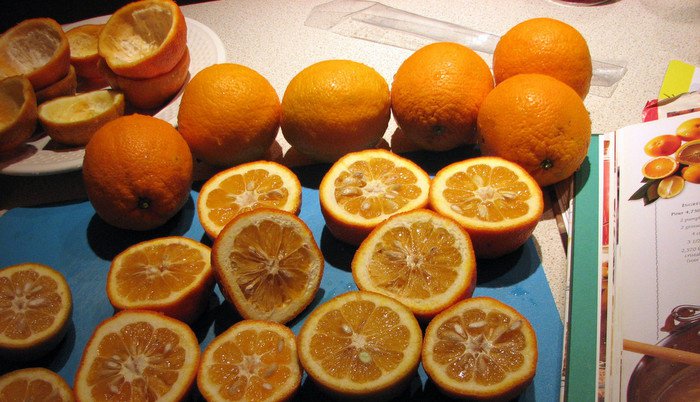Thai oranges and lemons won’t leave you sour

PHUKET: “Oranges and lemons, say the bells of Saint Clement’s”, so goes the opening couplet of the children’s nursery rhyme about London’s church bells dating from 1744. But though the nursery rhyme remains unchanged by time, the real oranges and lemons we knew as kids are not the same as the varieties we now encounter in Phuket’s fresh markets.
While there are more than 100 kinds of dessert orange, the ones grown in Thailand are generally small, green in color and with vivid orange flesh. In fact if the skin has begun to go yellow, the fruit may already be past its best. Generally sweet, succulent and with thin, easily peeled rind, they nonetheless contain lots of pips (seeds) and should be eaten soon after they have been picked or purchased. The juice is scrumptious.
Citruses are not only familiar to just about every man, woman and child, but grow in the wild in China, India and most of Southeast Asia. There are about 20 species: grapefruit, mandarins, cumquats and tangerines, as well as oranges, lemons and limes. But interestingly, recent studies have shown that all the major citrus fruits have evolved in cultivation from just three wild parent species, namely the citron (C. medica), the mandarin (C. reticulata) and the pomelo or shaddock (C. maxima). So commercial oranges, lemons and grapefruit are actually hybrids derived from these wild stocks.
Oranges are conveniently classified into sweet and sour categories. The Seville orange, named after the city in Spain where it is widely cultivated, is the only well-known member of the sour group. Rarely seen here, it grows on a tough, spiny tree up to 10 meters tall. Because of its neat crown and attractive fruit, it is sometimes cultivated as an ornamental shrub in Europe. Mainly produced for the marmalade trade, Sevilles have a thick, aromatic peel and bitter-tasting, inedible fruit.
Most of the dessert varieties have some connection with the mandarin and form an attractive rounded tree with glossy dark green leaves and fragrant white blossoms. They tend to do best in a climate that has a cool spell, though the smaller varieties grown here don’t seem to mind the all-year-round tropical temperatures.
Among hybrids, Ruby is a popular blood orange, whereas Valencia (available here only as juice) is an abundant cropper, relatively seedless and one that retains its fruit well on the tree. It would be worth a try to plant on the island, though it is likely to do better in Chiang Mai.
Another group, known as navel oranges, have a rudimentary second orange at the apex, forming the so-called navel. The seedless navel Washington, is considered one of the best of all eating oranges.
More in evidence here is the pomelo or shaddock – indeed it originates from Southeast Asia. The huge, dome-shaped pale yellow fruits of C. maxima (they resemble a large, warty grapefruit) have a yellowish-pink flesh with an aromatic tang and easily separated segments. Possessing extremely thick skin, they are usually sold already split up into sections, wrapped in cellophane.
Well worth considering cultivating in Phuket if you have the space, the tree has shiny leaves with a downy underside, and characteristic scented white flowers. If, however, you have a small garden, the tangerine – sometimes called the mandarin or clementine – is your best bet, since it not only revels in hot conditions but develops into a neat, small tree that can even be pruned to form a symmetrical shape.
All citruses need plenty of water in the growing season, applications of nitrogenous fertilizer, and shelter and protection from the wind. But they will reward the patient horticulturalist with fruit that is not only luscious, but packed with vitamins and other goodies.
For instance, a cup of fresh orange pieces will provide more than 160 percent of your daily vitamin C requirement in addition to fiber, potassium and folate. Like all citrus fruit, it also contains powerful antioxidants called flavonoids which may help to reduce cholesterol and compounds that can lessen the risk of a stroke.
The grapefruit and the shaddock (pomelo) confer further benefits. Rich in vitamin A as well as C , the grapefruit contains a carotenoid called lycopene which has been shown to reduce the risk of prostate cancer.
Wonder fruit. Grow them in your Phuket garden, eat them freshly picked from the tree, and you will derive all the benefits.
Catch Patrick’s next gardening story about the humble onion in the January 31 issue of the Phuket
Gazette.
If you have a question or a garden that you would like featured, email: drpaccampbell@gmail.com. Further information about this gardening series and Patrick’s other work can be accessed here.
— Patrick Campbell
Latest Thailand News
Follow The Thaiger on Google News:


























